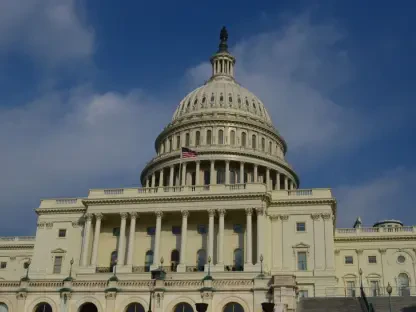The Senate GOP is engrossed in a heated debate over a proposed $15 billion relief fund intended for rural hospitals facing formidable challenges due to extensive Medicaid cuts. This budget adjustment is a critical component of a broader legislative measure aimed at supporting President Trump’s agenda. At the heart of this debate lies the fundamental question of whether the proposed fund adequately addresses the crippling impacts of these federal funding reductions on rural healthcare facilities, which are lifelines for their communities.
Experts Weigh in on Healthcare Funding and the Rural Safety Net
Healthcare experts agree that Medicaid cuts present a significant threat to rural hospitals already operating on narrow financial margins. As these cuts trickle down, hospitals serving rural areas experience mounting pressure that could potentially lead to reduced services or even complete closures. Experts emphasize that rural communities, which typically already have limited healthcare access, would be disproportionately affected by this scenario. The variety of perspectives presented in the Senate showcases the complexity of crafting a policy response that adequately supports these vital healthcare institutions.
Diverse Senate Perspectives on Funding Adequacy
Opinions within the Senate are sharply divided over the $15 billion relief fund’s sufficiency. Some Senators perceive this amount as an inadequate response to the federal reductions impacting Medicaid. Data illustrating the disparity in healthcare access between rural and urban areas underscores this viewpoint. Conversely, other Senators consider the proposal a positive step, although it may not be exhaustive. This dichotomy highlights the challenge of aligning a national relief framework with regional healthcare needs, where one-size-fits-all approaches often fall short.
Advocates for Substantial Financial Support
Some Senators are vocal in their call for a much more substantial financial commitment, advocating for a $100 billion fund to truly address the challenges faced by rural healthcare facilities. This group includes policymakers urging a more significant investment, based on detailed studies and real-life scenarios that depict the dire straits of many rural hospitals. They argue that robust financial support could have transformative implications, potentially reversing downward trends and enabling these hospitals to continue delivering essential services to their communities.
Evaluating Fund Distribution and Impact
Designing the allocation strategy for relief funds is as crucial as determining the fund size itself. Proposed methods for distribution vary widely, yet all share the common goal of optimizing impacts for rural hospitals. Historical precedents and geographical specifics must be considered to effectively tailor strategies to diverse regional needs. Previous models of healthcare funding often serve as lessons in both successes and shortcomings, informing current deliberations on the best paths forward for equitable and impactful assistance.
Long-Term Considerations for Rural Healthcare
Looking beyond immediate relief, these Medicaid cuts, paired with potential relief funding, have broader implications for the healthcare infrastructure in rural America. Innovations and regional adaptations in healthcare delivery are being explored, with some promising models emerging. This vision extends beyond traditional methods, challenging norms while responding to the distinct dynamics of rural communities. These elements collectively point toward a reimagining of how rural healthcare might evolve despite financial and systemic challenges.
Synthesizing Key Insights and Strategic Approaches
The ongoing debate in the Senate highlights varying philosophies concerning the relief fund’s size, fair distribution mechanisms, and rural impact. As discussions continue, recommendations emerge to guide policymakers: concentrate on flexible healthcare support strategies that account for regional differences and employ data-driven solutions. For rural hospitals, navigating these funding challenges necessitates strategic planning, local collaborations, and proactive adaptations to sustain patient care and operations.
Reflections on the Evolving Healthcare Policy Landscape
Over the years, policy adjustments have become necessary for sustaining rural hospital operations against the backdrop of Medicaid cuts. The proactive exploration of these issues underscores potential future transformations in healthcare systems. As we anticipate further policy shifts, the impact on rural communities remains at the forefront of these discussions. A forward-looking approach suggests that ongoing engagement and innovation will be pivotal in promoting health access and resilience in rural areas.









